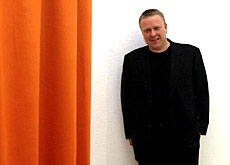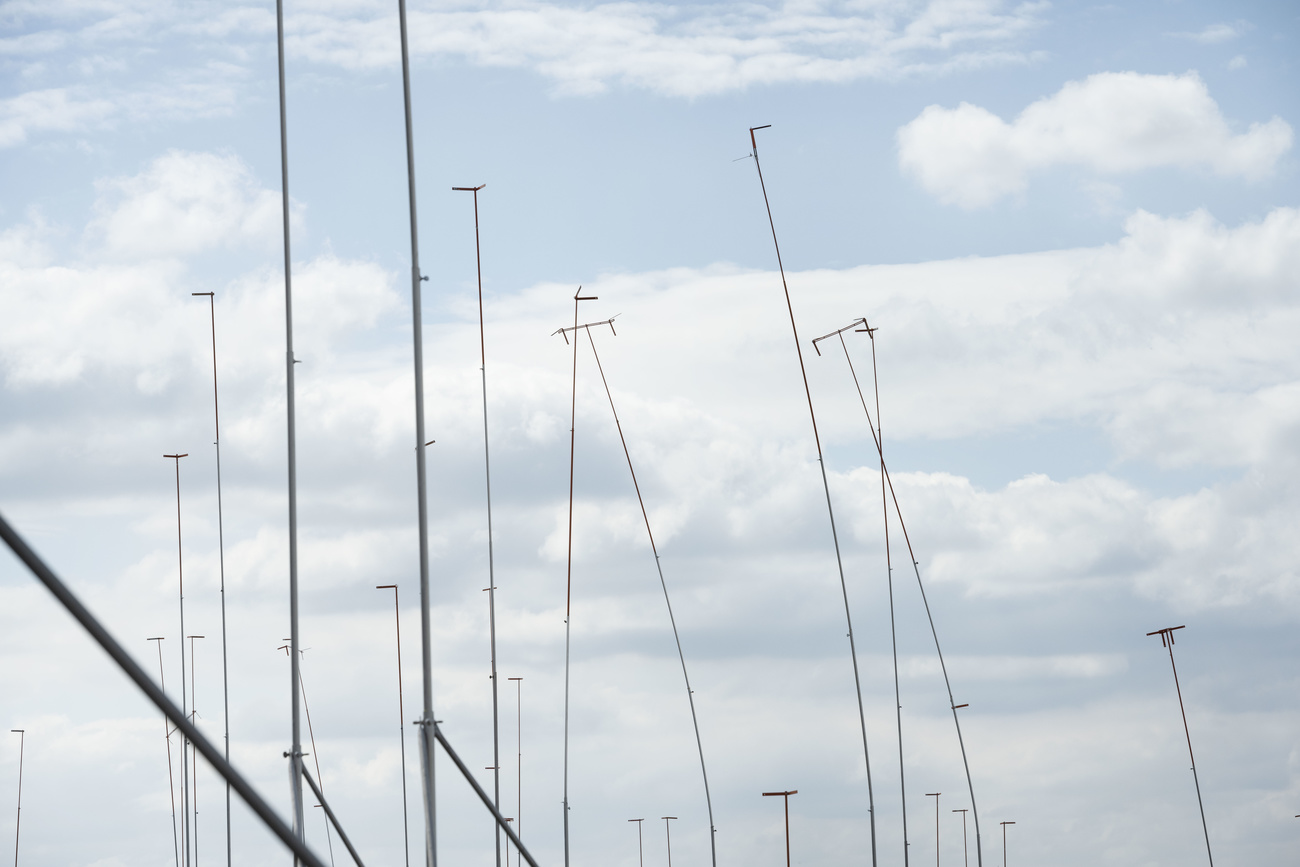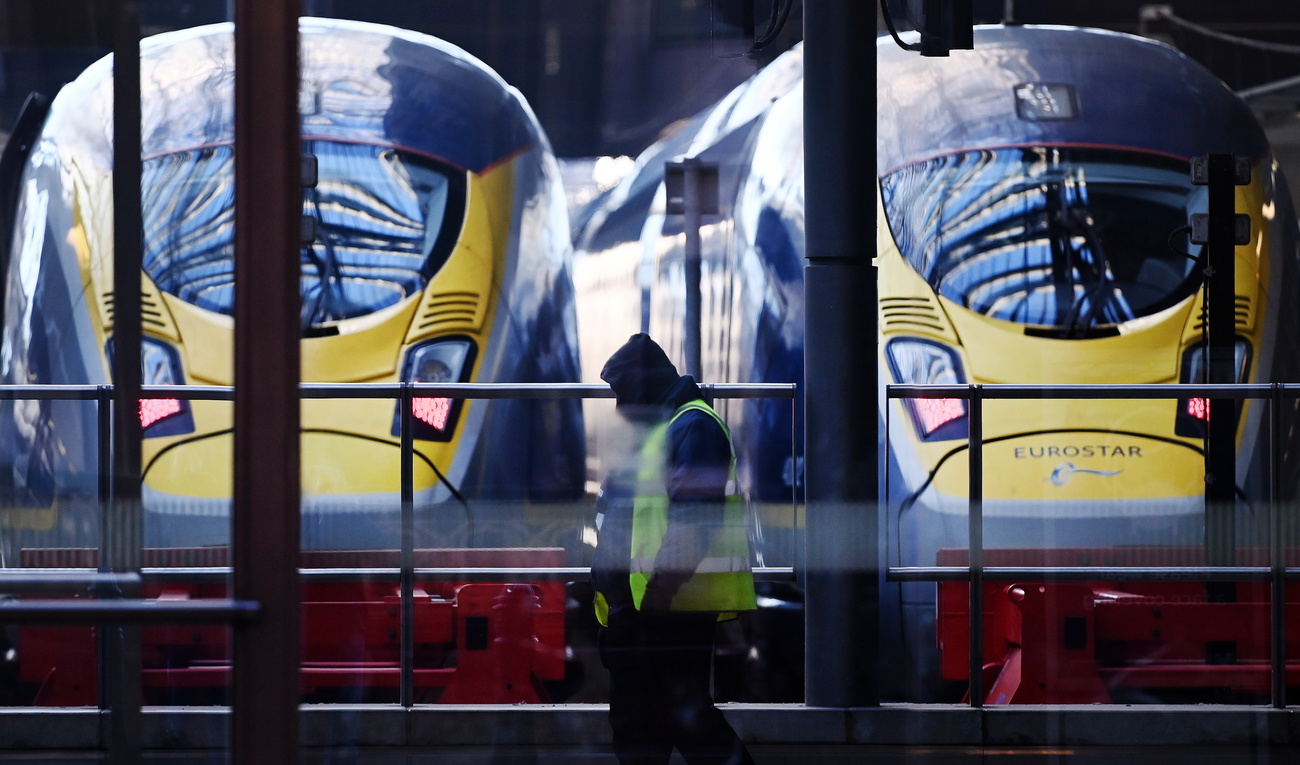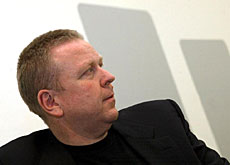Swiss must “fight” for Expo recognition

Switzerland will have to do something it is not very good at when the 2005 World Expo opens in Japan on Friday: fight to make its voice heard.
That’s the view of Martin Heller, the former artistic director of the Swiss national exhibition, Expo.02.
This year’s World Expo, being staged between March and September just outside the Japanese city of Nagoya, is the first global exhibition of the 21st century.
The Swiss government has invested SFr15 million ($12.8 million) on its presence at the event. The country’s pavilion – built in the shape of a mountain – will be competing with those of more than 120 other nations for the attention of an estimated 15 million visitors.
Switzerland has a less than auspicious track record when it comes to presenting itself on the global cultural stage.
One of its most controversial appearances was at the 1992 World Exhibition in Seville.
The Swiss pavilion’s slogan – “Switzerland does not exist” – was lampooned in the domestic press and criticised by politicians.
In an interview with swissinfo, Heller assesses past performances and offers some last-minute advice to organisers of the Swiss pavilion in Japan.
swissinfo: How well does Switzerland represent itself at world exhibitions?
Martin Heller: Well, I can’t give you an all-encompassing answer to that question. Perhaps the best way of summing it up is to talk of opportunities – some of them missed and others seized.
swissinfo: Why is it that Switzerland always seems to have problems with such exhibitions?
M.H.: I think we find it tremendously difficult to present ourselves in a particularly focused way. This has something to do with the fact that Switzerland is still under the impression that it does not have to fight for the attention of the world.
In Switzerland, more so than elsewhere, we also tend to be sceptical about putting our trust in a high-profile personality to handle the country’s appearance at world exhibitions.
Politicians in particular often cry foul when they think that what they are seeing is defeatist criticism of Switzerland… and they [find it impossible to] concede that artists and architects very often have a much better understanding of what works at such events.
swissinfo: Isn’t taking part in a world exhibition essentially about advertising or selling yourself?
M.H.: Yes, and just like in advertising you have to compete to get your message across.
But there’s more to it than that: you have to get your message across within the very specific medium of a world exhibition. Visitors to these events are often tired and have seen and heard a lot while walking around. They expect you to offer them something. And by that I mean more than just trivial entertainment or information. It’s about engaging with people on a personal level, and inviting them into a place where they feel welcomed.
swissinfo: The Swiss pavilion at the 1992 World Exhibition in Seville set out to provoke with the slogan “Switzerland does not exist”. This backfired somewhat…
M.H.: [You’ve got to bear in mind] that the competition [for visitors] is hard at global exhibitions.
The self-centredness at home, where nobody talked about anything else but this one small phrase, took on a completely different perspective when you turned up at the exhibition itself and saw that the Swiss pavilion was competing for attention with 50 others.
The reaction to the Swiss pavilion from visitors who came to Seville was nothing like the reaction back home. At the expo itself, the slogan was seen as no more than an amusing invitation to reflect on a country which many people didn’t even know existed. And indeed this invitation was received warmly by the majority of people [who visited the Swiss pavilion].
swissinfo: Switzerland is calling its pavilion at the 2005 World Expo “The Mountain”. Isn’t this clichéd image of Switzerland something of a step backwards?
M.H.: I don’t think so. The problem – but also the challenge – with world exhibitions is that they only come along every few years and so you don’t have much opportunity to develop the way you present your country.
This time around, a whole new generation of people are involved. I know the designers who are working [on the Swiss pavilion] in Aichi. They are tackling the task in hand in their own way and have a different concept of what the clichés are all about.
The fact that they are putting this together in Japan creates a completely different dimension. The 2005 Expo is taking place in a place where playing with traditional clichés is completely justified.
swissinfo: If you were a Japanese visiting the Expo, what would you expect to see in the Swiss pavilion?
M.H.: If I were a Japanese, and if I had spent the entire day walking around the Expo site in Aichi, I would be expecting to see something… that sums up what Switzerland is about.
I have to say that [at the last World Expo in 2000] in Hanover I found that there was very little substance to the Japanese pavilion. But I was impressed by the whole paper architecture, because this for me was one of the things that Japan stood for. So for this reason alone I can still remember that particular pavilion.
At the end of the day it always boils down to the same thing: get your message across in a way that will stay in the minds of visitors. In short, have something that makes you stand out.
swissinfo-interview: Christian Raaflaub
Born in 1952, Martin Heller is an art historian and ethnologist.
1989: director of the Museum of Design in Zurich.
1997: director of the Bellerive Museum in the same city.
1999-2003: artistic director of Expo.02, the 2002 Swiss national exhibition.
May 2003: artistic director of the German city of Bremen’s bid to become a European city of culture in 2010.

In compliance with the JTI standards
More: SWI swissinfo.ch certified by the Journalism Trust Initiative












You can find an overview of ongoing debates with our journalists here . Please join us!
If you want to start a conversation about a topic raised in this article or want to report factual errors, email us at english@swissinfo.ch.